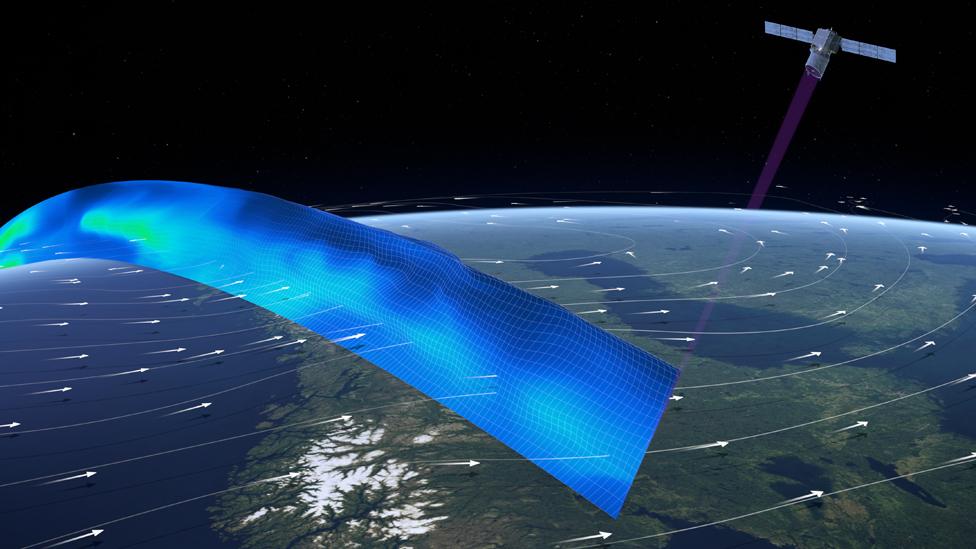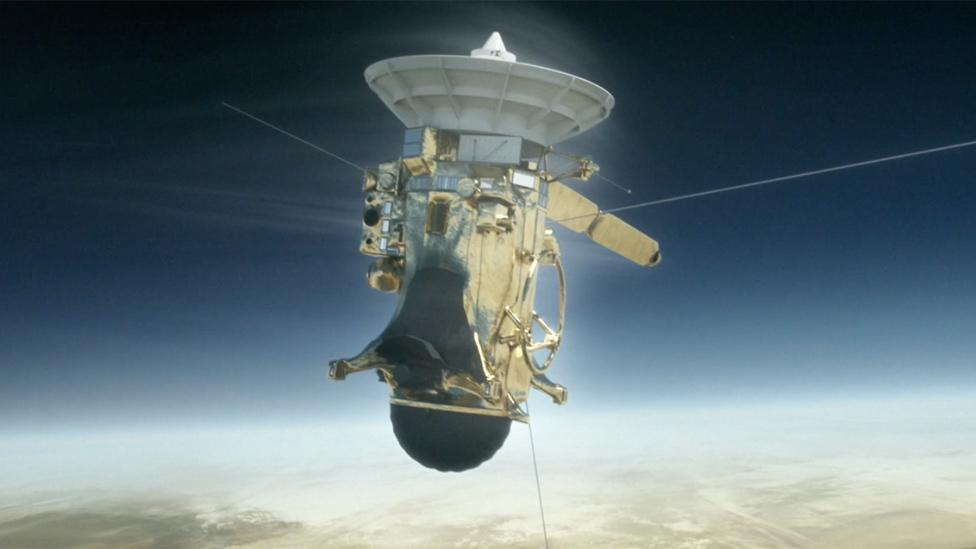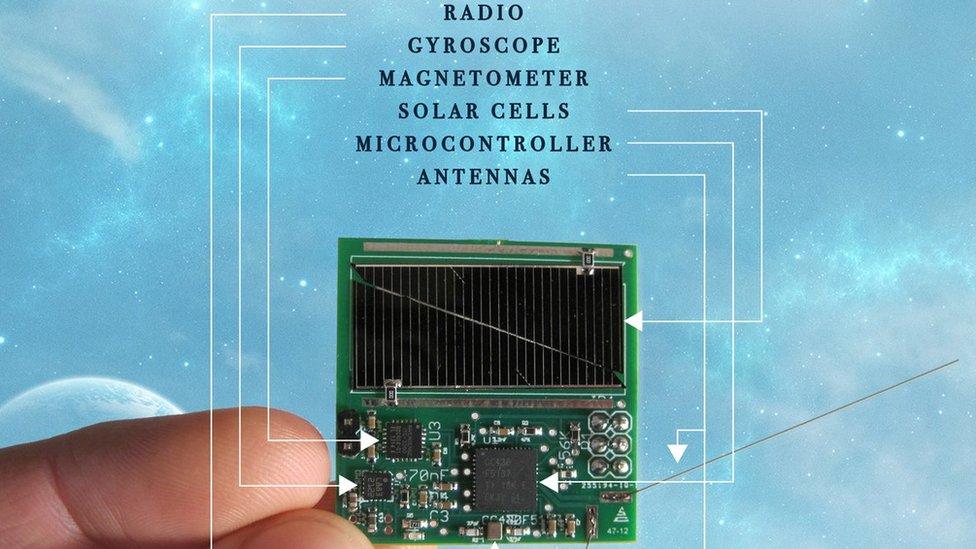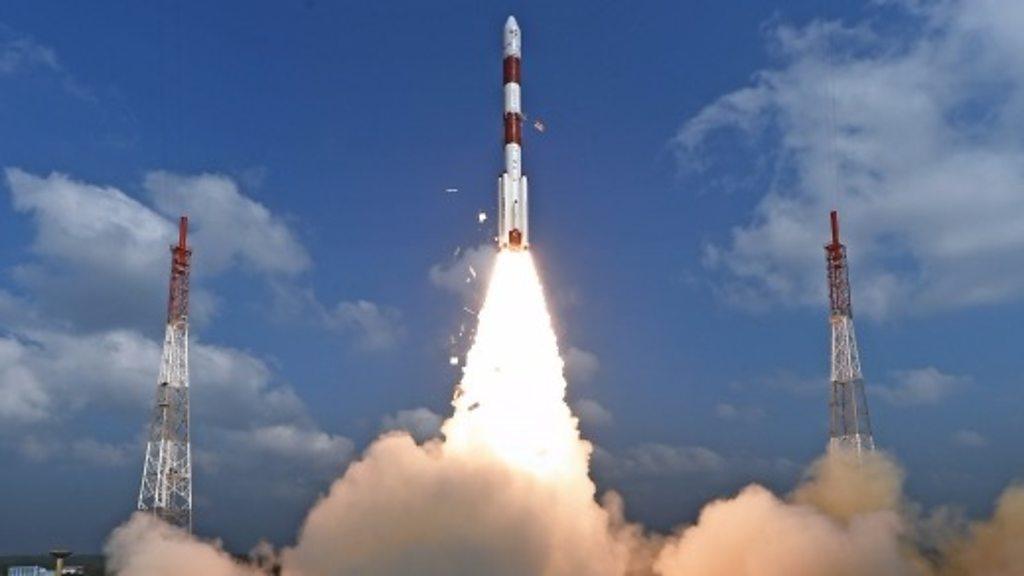Aeolus: The satellite headed for space to measure the Earth’s wind
- Published
- comments
WATCH: Take a look inside the spacecraft
The European Space Agency has launched a satellite that will measure wind speeds across Earth.
Aeolus blasted off from French Guiana in South America on Wednesday 22 August.
The launch had to be pushed back by a day because of - and we're not making this up - bad, windy weather.
It's the 'world-first' space mission to map Earth's winds, and the satellite is one of the most advanced in space.
What is Aeolus?

Aeolus satellie is ready to take off
The satellite is named after the Greek god of wind.
Its mission is to collect information on the Earth's wind, which will help scientists better predict the weather and understand climate change.
It was originally due to launch in 2007, but was delayed for 11 years because it was so difficult to build.
Aeolus was made by Airbus Defence and Space in Stevenage, England.
It has cost around £530 million and will spend just over three years in space collecting data.
How does it work?

The satellite will fire a laser into the Earth's atmosphere
Aeolus is designed to fly about 320km above the Earth.
Once it's in position it will fire a specially designed ultraviolet laser into the Earth's atmosphere.
The light from the laser will scatter back off air molecules and particles moving in the wind.
This will allow meteorologists - who measure the Earth's weather patterns - to get a better understanding of what the wind is doing.
Why is it important?

Aeolus could help scientists predict extreme weather like flooding
At the moment scientists use lots of different tools to measure what is going on in the Earth's atmosphere. But these tools can only tell us what is happening in certain places.
Aeolus will be able to show a full picture of what the wind is doing all over the Earth.
It's hoped that the data from the satellite will have lots of uses, including improving the daily weather forecast, predicting extreme weather, and helping keep sailors safe from storms.
It's also the first time that an ultraviolet laser has been used to measure the weather from space.
Scientists hope that in the future, other spacecraft will be able to use the same technology too.
- Published15 September 2017

- Published28 July 2017

- Published15 February 2017

